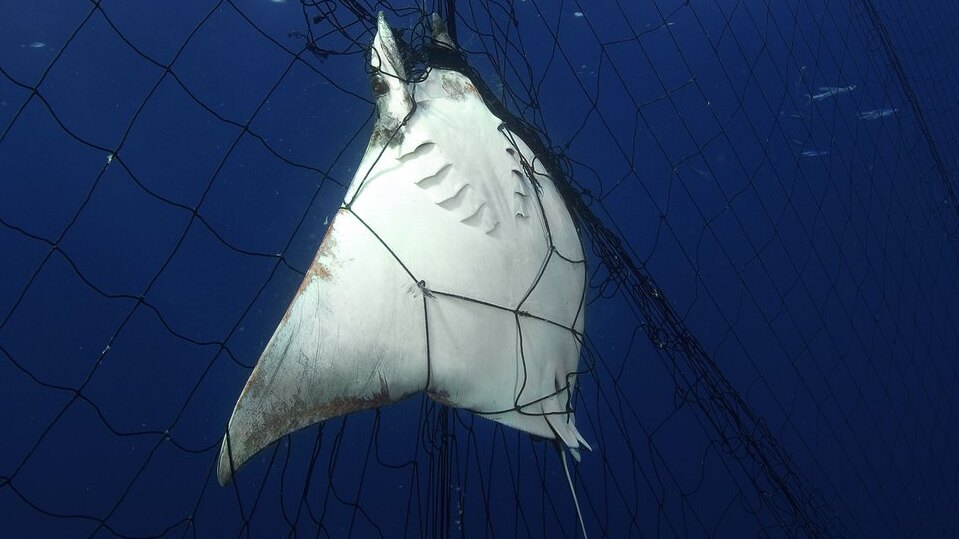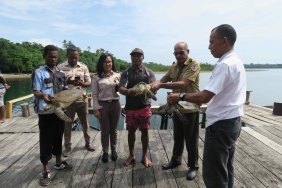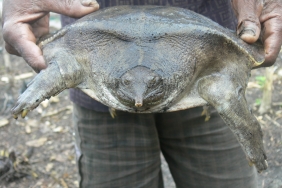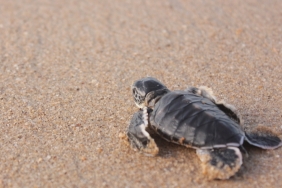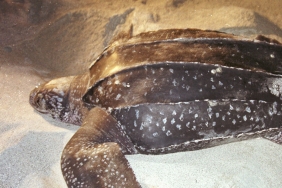GUITAR RAY CONSERVATION EFFORTS: EXAMINING THE SPECIES' POPULATION THREAT WITH MOLECULAR GENETICS
Part 1: Guitar Rays in Indonesia, Critically Endangered but Highly Utilized
Guitar rays are a group of cartilaginous fish related to sharks, and are one of the most critically endangered groups of fish today. In 2019, all guitar ray species from the families Glaucostegidae and Rhinidae were elevated to CITES Appendix II. The high demand for shark fin soup has led to high levels of shark hunting and fishing around the world, including Indonesia. However, shark fin soup cannot only be made using shark fins. Guitar ray fins have the same composition as shark fins, which is why these animals are captured and utilized for their fins to meet the high market demand.
Guitar rays have morphology and physical characteristics resembling sharks so many assume that this animal is a shark. However, guitar rays actually belong to the stingray group, due to the position of its gills at the bottom of its body, like stingrays in general. Guitar rays in Indonesia have various local names such as kekeh, mermang, junjunan, kemejan, liongbun (Pantura Java), kikir, lontar (West Papua), paitpait, paredung (Bali) and pangrum (Lombok). Globally, the guitar ray is better known as the guitarfish or wedgefish.
Several water areas in Indonesia are producing locations for guitar rays, including in West Kalimantan, Bangka Belitung and Lamongan where guitar rays are the main catch, while in Bintuni Bay as a bycatch. The types of fishing gear used by West Kalimantan and Bangka Belitung fishermen to catch guitar rays are bottom gill nets and hand lines. The guitar rays obtained by West Kalimantan fishermen come from the waters of the Karimata Strait and around Riau, while the guitar rays caught by Bangka Belitung fishermen are caught by fishermen in Bangka Waters, especially Pulau Tiga, Pulau Tujuh to the waters towards the Riau border. The shark and ray catches in Lamongan generally come from the Java Sea and use seine net and bottom longline gear with a total landing that can reach a maximum of 5 tons for a 17-day fishing trip.
Currently, the body of guitar rays at the Sungailiat (Bangka Belitung) Perikanan Nusantara Port (PPN) is valued at IDR 15,000/kg, while the snout to eye part is valued at IDR 5,000/kg. Guitar rays in Bintuni Bay are a bycatch of bottom gillnet and bottom longline gear. The number of guitar rays landed ranges from 1-5 per day, but this number is uncertain, because often they do not get any catch. As in the Brondong Lamongan VAT, the price of one guitar ray without fins in Bintuni Bay can reach Rp50,000/head. The guitar ray fins are generally cut first by the fishermen and sold to fin collectors, not fish collectors. Guitar ray fins are priced higher than shark fins, with the larger the fin size, the higher the price. Guitar ray fins can fetch up to Rp1,500,000/kg for the largest fin size. This high level of capture could threaten guitar ray populations in the wild because, like sharks, they have slow growth, small numbers of pups, and a slow age of sexual maturity. Several guitar ray species commonly found in Indonesia, namely Rhynchobatus australiae, Glaucostegus typus and Rhina ancylostoma are all Critically Endangered on the IUCN red list, two steps towards extinction.
Unfortunately, many fishermen are still unaware that guitar rays are currently globally categorized as endangered. For example, longline fishermen in Bintuni Bay often catch guitar rays as bycatch. Guitar rays caught by longlines are always alive and can be released during the lifting or hauling process. However, fishers choose to kill the guitar rays immediately and use them as a commodity for sale. This is due to the high selling price of guitar ray fins in Bintuni Bay.
Part 2: Supporting Research with Molecular Genetics for Guitar Ray Conservation
Currently, WWF-Indonesia's Shark Program, together with students from Diponegoro University, is conducting molecular genetics research by collecting tissue samples, biological data and guitar ray capture fisheries data collected from several landing sites. The research locations include Sungailiat VAT in Bangka Belitung, Brondong VAT in Lamongan and Sidomakmur Village or RKI in Bintuni Bay. All three locations are known to have fairly regular landings of both target and bycatch guitar rays. The targeted guitar ray species include Giant Guitarfish (Glaucostegus typus), Bowmouth Guitarfish (Rhina ancylostoma), Bottlenose Wedgefish (Rhynchobatus australiae), and Broadnose Wedgefish (Rhynchobatus springeri), but only the species with the highest number of samples from each location will be used as the main subject of this research.
The current research activities have only reached the field sampling stage. Sampling is carried out using equipment and materials in accordance with molecular genetics research methods. Every piece of equipment used for sampling must be sterile to avoid cross contamination, which is the contamination of one sample with another. Samples that have been taken are then preserved in 70% ethanol solution and stored at room temperature to maintain sample conditions until processing at the laboratory stage. Sample processing at the laboratory stage will also follow protocols and reagents that are suitable for guitar ray samples specifically and Elasmobranchii in general.
The results of this research are expected to be one of the information that can be used as a reference or reference regarding biological data on guitar ray species in Indonesia. However, molecular genetic information is only one of the many types of information needed for NDF preparation, decision-making, and scientifically accurate management. Therefore, support in the form of research is an important aspect in the management of guitar rays, including molecular genetics research conducted by WWF-Indonesia with Diponegoro University students, as well as other research focused on guitar ray species.
Although research and its results are very important as a reference in making decisions for management, thorough socialization to the community is also one of the keys to managing guitar rays. It is necessary to educate and socialize the condition and importance of guitar rays in Indonesia to the community and fishermen, especially to stakeholders. This is important to do so that awareness and conservation of guitar rays can be increased to prevent the further threatening and extinction of this biota.

